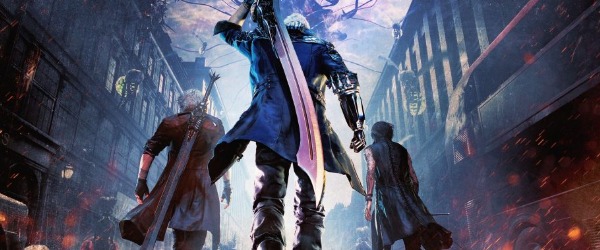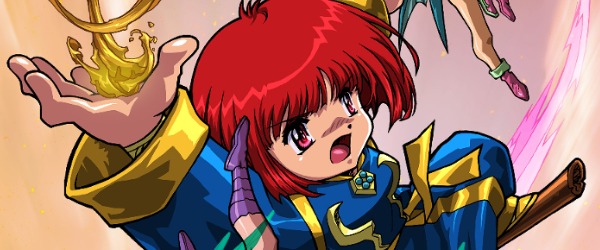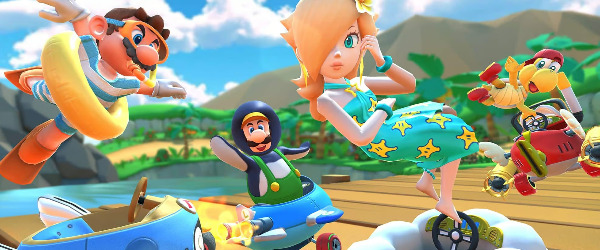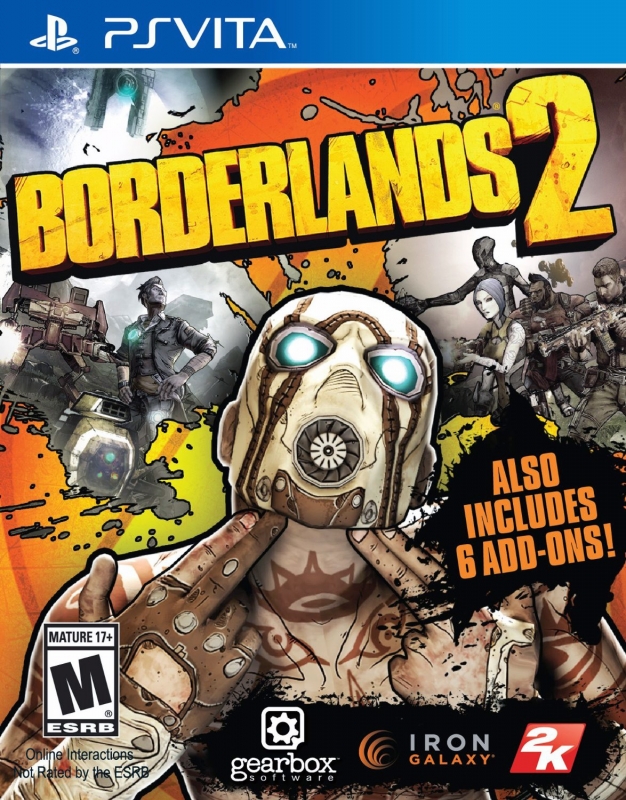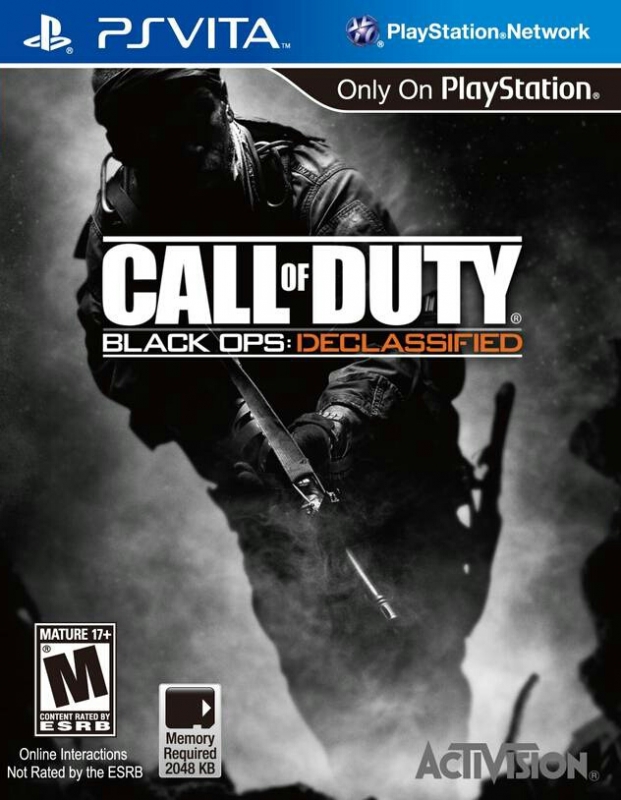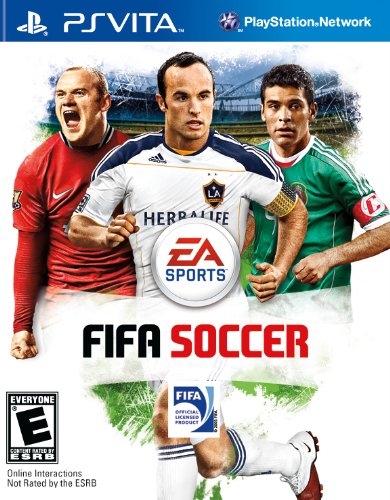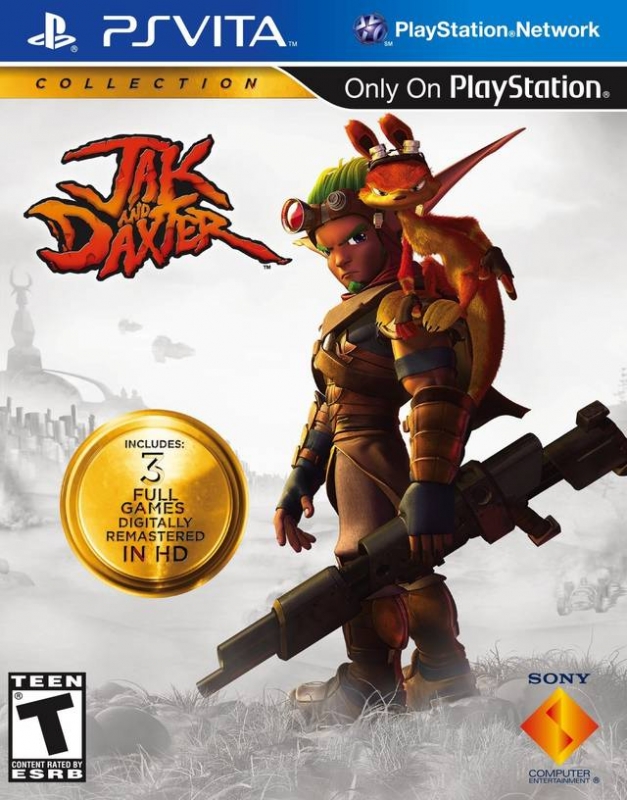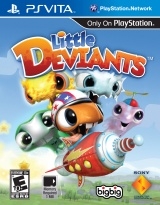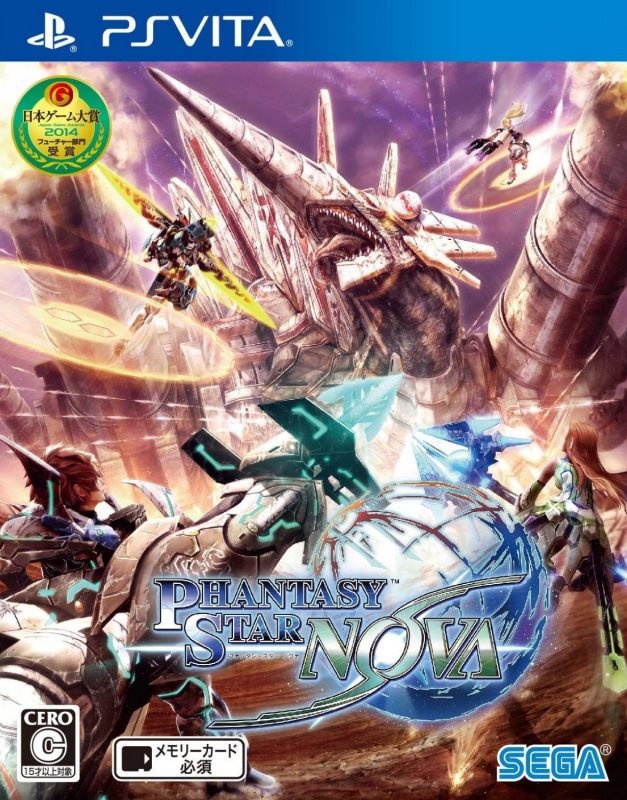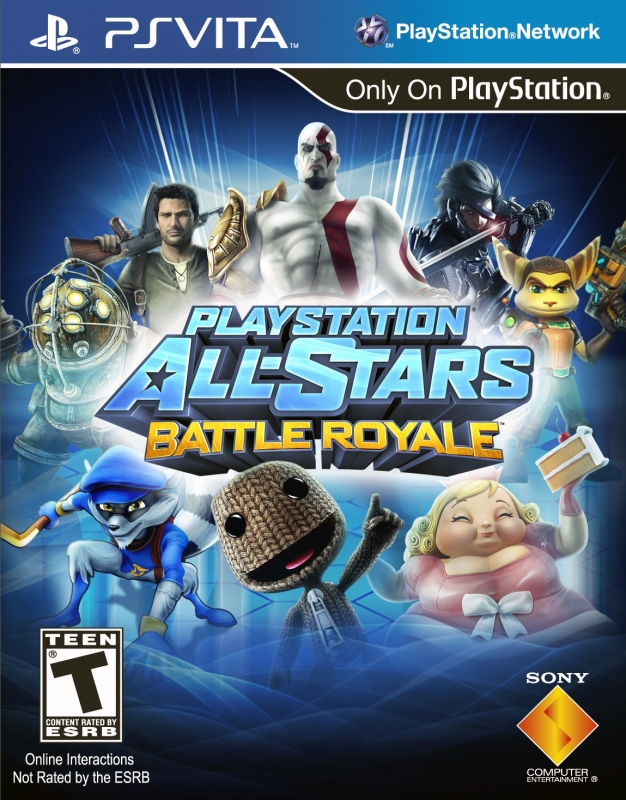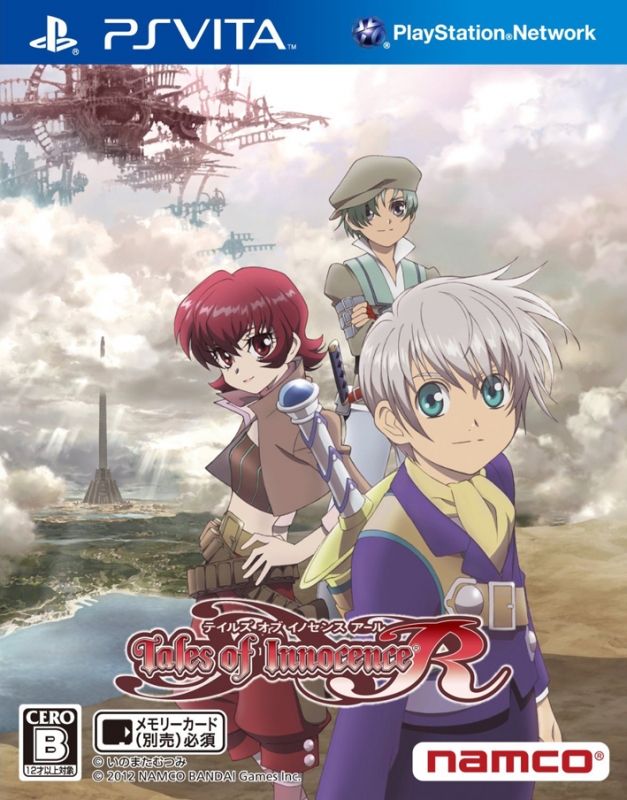
10 PlayStation Vita Software Missed Opportunities - Article
by Adam Cartwright , posted on 29 September 2019 / 3,999 Views“Killer app” is a phrase that gets thrown around a lot in the early years of a new console’s life, but particularly so when sales aren’t as strong as they should be. It refers to that game that turns the hardware into a must-have item and which helps to define the console’s direction and life – think Halo on the original Xbox, or Wii Sports on the Nintendo Wii. Often, the relevance of a killer app will reduce over time as the software library becomes more fleshed out, but it still holds key importance early on (think how key The Legend of Zelda: Breath of the Wild was early in the Nintendo Switch’s life).
Many would argue – and I wouldn’t really disagree – that the PlayStation Vita never really had a killer app. There wasn’t that one piece of software that helped change the console’s fortunes. The closest we got was arguably Persona 4 Golden, an early release that received huge critical acclaim, but it was part of a niche series and as such its sales impact from a hardware perspective was muted.
There were missed opportunities along the way, as certain titles had the potential to change the Vita’s fortunes, but the way the final product was delivered (if indeed it was delivered at all) left a lot to be desired and so they didn’t reach their full potential. It’s these games I’m aiming to look at this in this article – 10 games that were missed opportunities on Vita. I’m not saying that every release I’ll be talking out here had the potential to be a “killer app”, but if they had been executed a little better they would have undoubtedly been a key factor in helping the console reach a wider audience.
BioShock

When Ken Levine took to Sony’s stage at E3 2011 to announce that the critically acclaimed BioShock series was coming to Vita, expectations were high for another stellar entry in the franchise that would be tailor-made for portable hardware. Years passed without any update regarding where development was at – some people speculated it would be set in the world of Infinite, others suggested it would be a port of the iOS version of the original BioShock. By July 2014 the game had been officially cancelled, with Sony and Take Two failing to come to an agreement to even allow development to begin.
BioShock was a missed opportunity for a number of reasons. It was an early tentpole reveal for Vita and had a lot of hype behind it; the fact that it didn’t happen at all shows the level of apathy from Sony towards the machine. Apathy that caused many to (rightly) question its future. It was also the kind of big-name, well-received series that would have helped fully establish the handheld in the market. Levine revealed that the title would’ve likely been a Final Fantasy Tactics–esque SRPG and, had this been pulled off well, it could have opened the door for more blockbuster series treating Vita as a machine for more experimental spin-off side-stories.
Borderlands 2

When it was announced that Sony it was working with Gearbox Software to bring the critically-acclaimed and commercially-successful looter-shooter sequel Borderlands 2 to the PlayStation Vita, it presented a fantastic opportunity to re-invent the device, which had up to that point struggled in sales in the west. In particular, something like Borderlands – a title with tonnes of replayability and a sea of content – would’ve made the perfect showcase handheld game, especially as it was bundled alongside the newly-launched LCD Vita hardware.
Unfortunately, in the process of cutting the game down to get it running on the console, developer Iron Galaxy made a number of concessions that ended up butchering the experience. While graphical elements remained mostly in tact, things like corpses would explode upon death and the draw distance was significantly reduced. More disappointing was the fact that multiplayer was dropped from 4 to 2 players... and yet performance still suffered, regularly dropping into single figures, making it unplayable for some. Coupled with the fact that not all of the DLC was included and you had an incomplete package that ended up not being the smash hit it could have been.
Call of Duty: Black Ops Declassified

If Borderlands could be classified as a disappointment, then Call of Duty is what I would call a disaster. Supposedly the flagship title of the Vita’s first holiday season, it was initially shown off via an underwhelming logo reveal during E3 2012, before a Gamescom trailer demonstrated why it was being kept so much under wraps – it just wasn’t very good. It eventually released in November to underwhelming reviews (I found it to be very disappointing), although it would still go on to become one of the console’s best-selling titles, mostly from name recognition alone.
The reasons why it turned out to be such a mess aren’t exactly clear, but rumour has it that Activision was originally planning on porting Black Ops II to Vita before realising that the handheld couldn’t run it. Being contractually bound to deliver the title before the end of the year, the publisher hired the only developer with a working FPS engine on Vita (Nihilistic Software) to churn it out in just five months, leading to features like zombies being cut and a campaign that lasted less than an hour. There’s clearly a solid enough base underneath, so had a little more time and care gone into the title it could well have been a killer app that offered a fully-fledged Call of Duty experience on the go.
FIFA

Nowadays, FIFA is a gaming institution, selling tens of million copies every year and breaking records with each successive version. Unsurprisingly, sales are strongest on home consoles, where people can play with their friends, but a fully-featured handheld iteration would undoubtedly offer something unique. That's sort of what FIFA Football did when it released alongside Vita’s launch in 2012, offering a port of the year-old FIFA ’11. It received solid reviews despite lacking a coveted ‘Ultimate Team’ mode.
Unfortunately, rather than building on this base in order to make a better game by the time FIFA ’13 rolled around, publisher EA simply opted to release the same game with updated rosters and kits (a simple case of re-skinning the assets that were already there). It’s a process EA repeated for the subsequent FIFA ’14 and FIFA ’15 versions, meaning that fans quickly became disillusioned. Rather than building a portable sports game fanbase, EA just milked a few extra quid from Vita fans. It was a massive disappointment, but unfortunately it's not a habit EA is looking to change any time soon – the cycle is currently being repeated on Nintendo Switch.
The Jak & Daxter Trilogy

Now let me preface this by saying that, personally, I’m a huge fan of the Jak & Daxter Trilogy on Vita, as I can see past its flaws and am just in awe that three of my favourite PS2 games of all time are available on a handheld console. I can’t, however, defend the fact that objectively it’s among the worst ports available on the console. All three games suffer from audio and graphical issues, massive bouts of slowdown, and occasional crashes, making them quite an ordeal to play through at times.
The reason I’m including it in this list is because it had the potential to be the start of something fantastic for Vita. We’d already seen the handheld was capable of handling PS2 ports, with the brilliant Metal Gear Solid HD Collection, and it was beginning to seem like the console could have had a rebirth as a portable PS2. Unfortunately, with sloppy ports like Jak and subsequent efforts from Sony (everything from God of War to Ratchet to Sly had some sort of issue) this didn’t come to pass, which is a real shame.
Little Deviants

Not everything can be Wii Sports – in fact, few if any games will ever achieve the runaway success that title did when it came packaged in with the Wii in 2006. Yet many games have tried to capture that lightning-in-a-bottle of being the showcase title for a new piece of tech, from Kinect Sports on the Kinect to NintendoLand on the WiiU. Little Deviants was very much that game for Vita – something designed to show off the unique hardware and what it was capable of.
The problem with Little Deviants is that it just isn’t very good. It contains a selection of mini-games that show off everything from the front and rear touch pads to the microphones and gyroscope, but rather than being compelling examples to show why the Vita’s hardware was an evolution in the market, they just come across as minor distractions without any substance to them. Wii Sports' Bowling was a revolution that families across the globe played together and it’s a real shame the team at BigBig Studios couldn’t realise anything remotely similar in Little Deviants.
Phantasy Star Nova

On PSP, Monster Hunter – a series where you hunt giant monsters – went from being a relatively popular franchise to an absolute… well, monster. Particularly in Japan, where local ad-hoc play took off, it became a regular multi-million seller and spawned a sea of imitators, the most successful of which was SEGA’s Phantasy Star Portable series. Based on the earlier Phantasy Star Universe titles, it offered tense team-based missions in the series’ familiar sci-fi universe and went on to sell more than 600k copies in Japan alone.
So when SEGA announced a new Vita entry – Phantasy Star Nova – in 2013, expectations were high that it would continue this success. Sadly, thanks to a poorly-received demo (which did lead to some improvements based on fan feedback, albeit too little too late for some) and the fact that it was based on Phantasy Star Online 2 (which was already available on Vita), the game launched to mediocre numbers in Japan and didn’t end up being the killer app that I’d imagine both SEGA and Sony had hoped it would be. Worse still, the game was never released in English – a frustrating omission that would undoubtedly have helped it achieve greater success, especially on the back of similar hunting titles on Vita such as Freedom Wars.
PlayStation All-Stars Battle Royale

As with the Jak & Daxter Trilogy, let me open by saying that I love PlayStation All-Stars Battle Royale – a crossover 2D fighting game that is heavily inspired by Nintendo’s Super Smash Bros. and has characters from various PlayStation franchises duking it out for supremacy. It released in late 2012 as a cross-buy title across PS3 & Vita (one of the earliest games to use this initiative) and certainly had a lot of hype behind it prior to release, although unfortunately it also had a lot of baggage too.
Criticism stemmed from two key things. The first was that the game borrowed much too heavily from Smash, but replaced one of its key systems (ring-outs) with a ‘supers’ system that didn’t work anywhere near as well. The second was the limited roster. Dozens of historic PlayStation franchises like Crash Bandicoot, Final Fantasy, Resident Evil, and Spyro the Dragon weren’t represented, meaning it wasn’t really the celebration title Sony was presenting it as. I can look past these issues and enjoy it for what it is, but it’s hard to deny that it was a big missed opportunity to offer a unique experience based on PlayStation’s rich history.
Tales of Innocence R

As part of its early support for the Vita in Japan, Namco decided to remake the previously Nintendo DS-only Tales titles, including Tales of Innocence R. Despite being a low-budget title that felt like it was originally designed for the PSP, it received fairly positive reviews and sold well enough for another remake to follow in 2013 (Tales of Hearts R, although sadly the heavily-hinted Tales of Tempest R never came to fruition).
Rather than quickly localizing this to take advantage of the post-launch software drought in the west, the game was never translated into English and remains a Japan-only exclusive to this day (unless you use the fan translation patch). While it wouldn’t have really been a killer app, there was undoubtedly a missed opportunity here for Namco to release it in the west in 2012 when Persona 4 was riding high in the sales charts and Vita owners were clamoring for a new JRPG to follow it up with. Tales of Innocence R could’ve easily filled a gap in the market, but instead its legacy is as a niche import.
Warriors Lair/Ruin

Another unfortunately cancelled Vita game that showed huge potential, Warrior’s Lair (previous known as Ruin) was a Diablo-inspired isometric action RPG with a unique twist. You were set to be able to build your own ‘lairs’ to store valuable treasures that you’d come across in the single player adventure, and these could then be invaded by other players. This unique customisation aspect would undoubtedly have enhanced the life of the title. And leaked gameplay looked plenty enjoyable on its own even without this feature.
Sadly, despite being trailed fairly heavily early in the console’s life and reportedly being quite far along in development, Warrior’s Lair was taken off developer Idol Minds and brought in-house to Sony’s San Diego Studio, before being cancelled a short while later. It was a missed opportunity for a number of reasons, not least because it would have filled the massive Diablo-shaped gap in the handheld’s library (ensuring that it would have sold very well), but also because it would’ve released as a Sony-published title at a time when the manufacturer was heavily pulling back support for the machine. Perhaps this show of faith would have convinced other publishers to stay on board longer than they did, but whatever the impact it’s a shame this one never saw the light of day.
Conclusion
No one factor really caused Vita to do as poorly as it did on the market; it was a combination of things, from the pricey memory cards, to the rise of smartphones, to the common first-year software drought. Undoubtedly, though, the quality (or lack thereof) of the games in this list (or in some cases, them not appearing at all) contributed to the Vita’s ultimate fate. Alone, they might not have righted the ship, but together they could have helped the machine appeal to a wider audience.
In some instances, it was a case of timing – Call of Duty was shoved out of the door to meet a deadline, while Borderlands 2 suffered similar issues with the release of the LCD Vita in the west. In other instances, it was some kind of contractual issue – BioShock didn’t happen because supposedly Sony and Take-Two couldn’t come to any kind of agreement on it, while PlayStation All-Stars was hamstrung by third parties needing to agree to include their characters in the game.
For a lot of the titles on this list, though, there’s just no logical reason for things turning out the way they did. It wouldn’t have taken much for EA to put more than just a re-skin of FIFA every year, while Jak & Daxter just needed more care putting into its porting process. Whatever the reason, I find it fascinating to look at the way things could have been. I still love my Vita so much for what it is, but can’t help but lament that it could have been something even more.
More Articles
It's not easy for me to comment in the Vita these days, but I will say this: I was pretty impressed with Little Deviants. I put in roughly 10 hours, and would have almost certainly played more if I could have.
First ever comment on VGC via mobile. :)
Vita just happened in the wrong age. It's like wanting to push Walkmans in an age of music streaming software.
I would have loved Bioshock on Vita, even if it was just port of IOS version. It kinda resembled OG Xbox graphics but the game was apparently intact in content.
Borderlands 2 on Vita was a bad idea. It was technically a functional product, but the performance was choppy and there was so much compromise visually. I think Sony even funded it and it was bundled! Think about it this way, they bundled Vita with a game that makes people assume the hardware is trash.
I honestly didn't feel CoD on Vita was that bad. I won't defend it as a good product per se, but it was an enjoyable portable FPS in a pre Switch world. They should have simply ported some of the Wii games games to Vita, like Black Ops or Modern Warfare 3.
I thought Blops Declassified was pretty bad, the multiplayer worked at least but the single player was abysmal (short and frustrating). Then again, I've yet to play a CoD campaign I've enjoyed so maybe it's just me - but this one seemed particularly poor.
It wasn't really a campaign, they were just small challenging time trial missions.
The Nintendo DS actually had some pretty decent CoD campaigns. They just didn't play great and looked like N64 games.








